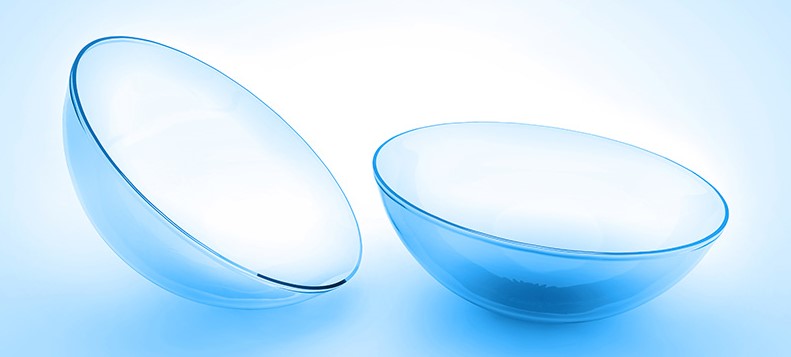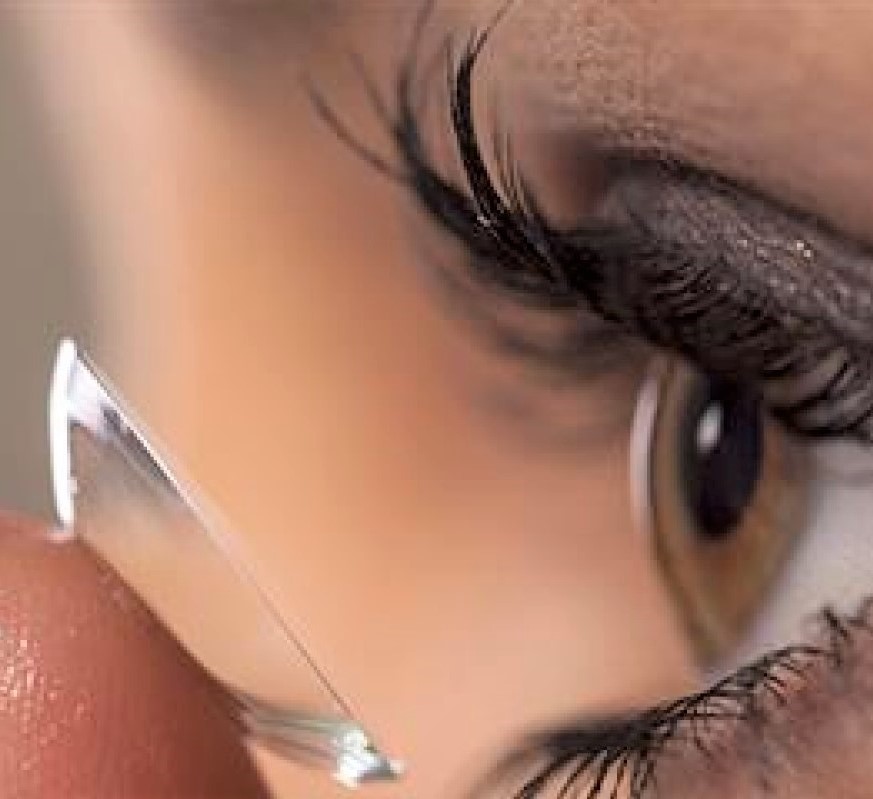Contact Lens Evaluation and Fitting

Soft Contact Lenses are lenses that are made from hydrogels, which are gel-like, water containing plastics. These lenses conform to the cornea, or front surface of the eye.
Daily Disposables (or single use) are designed to be worn for one day. They are thrown away at the end of the day. There are many advantages to choosing daily disposables. These include the following:
Safest and healthiest modality — provides a clean sterile lens each day
Comfort — fresh new lens each day (minimal deposits caused by lipids and protein that are produced by tears as the lens is on the eye)
Ease of use — no contact lens solutions and storage cases needed (cost savings)
Highest compliance — best suited for teens and new wearers
Newest technology — manufacturers apply the newest technologies to daily disposable lenses

Rigid Gas Permeable Contact Lenses (also known as RGPs) are rigid contact lenses but are porous, allowing oxygen to pass through them. Due to the rigid nature of the lens material and the closer proximity to the cornea (the surface of the eye), they provide sharper optics than soft lenses. The lenses tend to be smaller than soft lenses and cover only 70-80% of the cornea.
It does take a little longer for patients to adapt to the lenses, but they are designed to last longer than soft lenses. There are specific criteria that qualify a patient for RGPs. Our doctors will recommend, educate, and guide you through the process.
Scleral Lenses are made with the same material as rigid lenses but are larger in diameter. They cover the entire corneal surface and land on the sclera or white part of the eye. The sclera supports the lens allowing the lens to vault over the cornea without interaction with the sensitive cornea. Scleral lenses are indicated for patients with irregular corneal conditions as an alternative to traditional soft or rigid lenses.
Contact Lens Evaluation and Fitting

Soft Contact Lenses are lenses that are made from hydrogels, which are gel-like, water containing plastics. These lenses conform to the cornea, or front surface of the eye.
Daily Disposables (or single use) are designed to be worn for one day. They are thrown away at the end of the day. There are many advantages to choosing daily disposables. These include the following:
Safest and healthiest modality — provides a clean sterile lens each day
Comfort — fresh new lens each day (minimal deposits caused by lipids and protein that are produced by tears as the lens is on the eye)
Ease of use — no contact lens solutions and storage cases needed (cost savings)
Highest compliance — best suited for teens and new wearers
Newest technology — manufacturers apply the newest technologies to daily disposable lenses

Rigid Gas Permeable Contact Lenses (also known as RGPs) are rigid contact lenses but are porous, allowing oxygen to pass through them. Due to the rigid nature of the lens material and the closer proximity to the cornea (the surface of the eye), they provide sharper optics than soft lenses. The lenses tend to be smaller than soft lenses and cover only 70-80% of the cornea. It does take a little longer for patients to adapt to the lenses, but they are designed to last longer than soft lenses. There are specific criteria that qualify a patient for RGPs. Our doctors will recommend, educate, and guide you through the process.
Scleral Lenses are made with the same material as rigid lenses but are larger in diameter. They cover the entire corneal surface and land on the sclera or white part of the eye. The sclera supports the lens allowing the lens to vault over the cornea without interaction with the sensitive cornea. Scleral lenses are indicated for patients with irregular corneal conditions as an alternative to traditional soft or rigid lenses.



